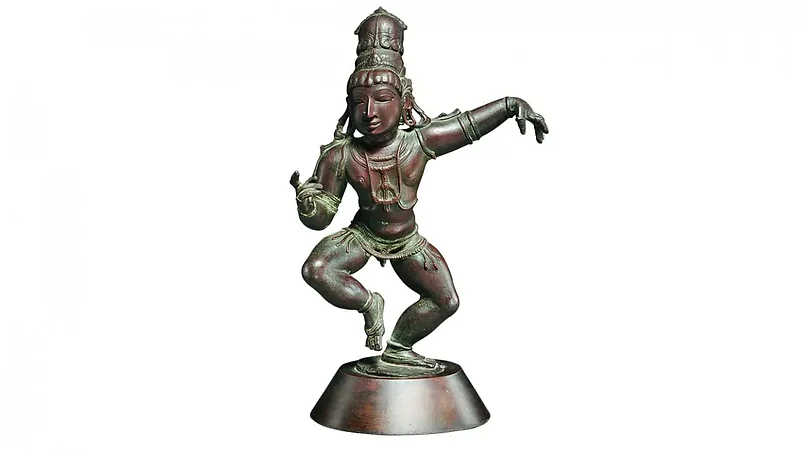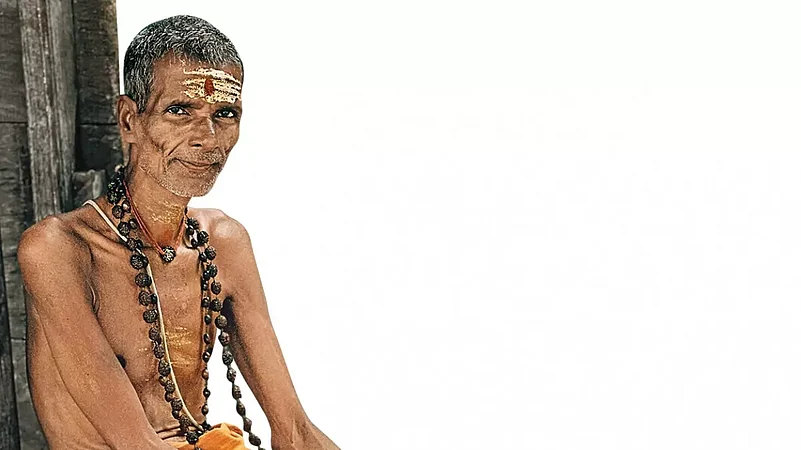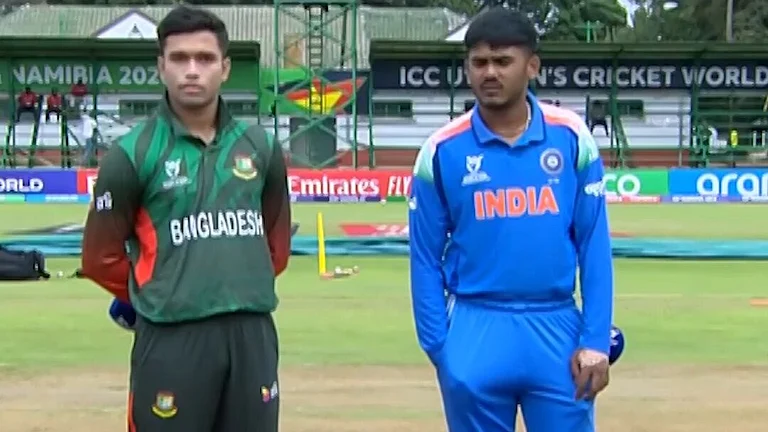If the Bharatiya Janata Party’s (BJP’s) attempt to forge an icon for a pan-India Hinduism through Ram remains unsuccessful in Tamil Nadu, its recent efforts to make Shiva such an icon also aren’t likely to yield results on their own. This is not because Shiva is not worshipped in Tamil Nadu. He is, and widely so. But the efforts to project Shiva as he is worshipped in Tamil Nadu as an icon of all-India Hinduism face tall obstacles both in the form of the sociological reality of Tamil society and in the discursive forms of the Dravidian discourse.
An observation by renowned sociologist M.N. Srinivas in his influential book Religion And Society Among The Coorgs of South India is a good place to begin our understanding of the sociological reality of the subcontinent. He identifies two types of unity according to how they are ‘spread’ in the subcontinent. One is a unity that is spread across the breadth of the subcontinent. This unity he calls horizontal and argues that it is present primarily among upper castes, especially Brahmins, across the subcontinent. This is due to their adherence to a common Sanskritic ritual and an ‘all-India Hinduism’ that is essentially Sanskritic in nature.
The other type of unity is a vertical one present among members within a linguistic and culturally homogeneous region, owing to their homogeneity and adherence to a ‘regional Hinduism’ — characteristics of which are the possession of the same deities, cultural forms, etc. While there is greater horizontal unity among similarly placed upper castes, there is less shared ritual practice among lower castes and an adherence primarily to ‘regional Hinduism’.
Thus, it isn’t baffling that the imagination of a shared nation and a shared national religion appeared more naturally to the upper castes in the early phases of the nationalist movement. (I do not mean that anti-colonial sentiments arose primarily among the upper castes. There is a distinction to be made between the two.) The task of genuinely ‘nationalising’ this pan-India Hinduism was attempted by the Indian nationalist movement (with generous help from Orientalist scholars of the subcontinent), where nationalists, nationalised variously, presented the Vedas, Ram, Krishna or the Gita as the unifying factor of Hinduism across the subcontinent. But this task of integrating lower castes into this ‘national Hinduism’ remained largely unsuccessful in Tamil Nadu due to the strength of a competing Dravidian discourse.
While the Dravidian discourse is often seen as a singular discourse marked by ‘Periyar’ E.V. Ramasamy’s radical rationalistic discourse, various strands of discourses of Dravidianism challenged and reinforced each other in the latter half of the 19th and the early half of the 20th centuries. Important among them and crucial for understanding the difficulty in making Shiva the icon of a pan-India Hinduism is the discourse of the Dravidian Shaivites. The centrality of Shaivite discourse to the Dravidian movement, its caste and class character and its commitment to the annihilation of caste have all been rightly challenged by scholars of the Dravidian movement. Yet, the challenges its discursive formulations posed, and continue to pose, to establishing Brahmanical religious dogma and practice as all-India Hinduism deserve scrutiny.

But to understand the discursive formulations of Shaivite Dravidianism, it is crucial to understand the discourse it was responding to —the nationalist discourse. The eminent historian late M.S.S. Pandian argued that the Orientalist construction of a unified Hinduism with the Brahmin as its “epitome of moral virtue and spiritual guardianship” elided “Hinduism, Brahmin and nation”. This created discursive practices which conferred vast powers on the Brahmin as he became the representative of the other two.
ALSO READ: Shiva The Consciousness And The Bliss
Early nationalists enthusiastically embraced this construction. But Pandian argued that this very construction allowed for a new transitive critique of Brahmin power where “evoking one of these elements produced a network of references to other elements through a set of discursive associations”. By deduction, the new oppositional set of discursive associations becomes “Dravidianism, Non-Brahmin and the (Tamil) region.” We see a direct response to the ‘Aryan’ narrative construction that early nationalist thought borrowed from the discourses of Shaivite revivalism.
As Orientalist scholars tried to invent a single coherent religion of the varied religious practices of the subcontinent so that they could contrast it with their own, early nationalist leaders pretty much borrowed the same for their nationalist imagination. Pandian gives us a glimpse of the nationalist imagination of the ‘Aryan’ past as he analyses Arya Jana Ikiyam Allathu Congress Mahasabha’(Unity of the Aryan People or the Congress Party)—an important nationalist treatise by prominent nationalist G. Subramania Iyer, published in 1888.
Iyer takes pride in the vastness and population of the large country that belongs to the Aryans, who, according to him, came from “beyond the Himalayas and Indus river”, “waged war to assert their individuality”, “only impelled by their love for their religion”. They, according to him, “wielded the sceptre according to the opinion of the people”. He argued that even as mutual isolation created differences in appearances and languages, most of the languages were born from Sanskrit and that all the people were rooted in common religiosity, accepted Vedas as the truth, believed in the epics of Ramayana, Mahabharata and Bhagavata Gita as paths to salvation, and revered Sanskrit as their deva bhasha.
We see that he narrates a history of Aryan conquest, albeit not in the language of conquest and domination, but in the language of a triumph of a moral project that Indians eventually came to appreciate and fully adopt. As Iyer goes on to narrate a history of the corruption of this moral order under the coercive rule of Muslim rulers and the British, the project of the nationalists is marked clearly—to redeem the moral order that all Indians once relished in, the moral order of the Aryans.
We can see in the imagination of the Tamil region, in the works of Shaivite scholars, a reversal of this narrative (ironically also deriving from Orientalist scholarship—the school of Orientalism known as the Madras School of Orientalism). They aimed to narrate a history of a hoary Dravidian past to recast Shaivite literature as Tamil literature, Shaivite history as Tamil history and, ultimately, Shaivite identity as Tamil identity.
As revealing as the title of Iyer’s work was, equally telling is the title of pioneer Saivite scholar ‘Manomaniam’ Sundaram Pillai’s work, Some Milestones in The History of Tamil Literature on The Age of Thirugnanasambandar, published in 1891. We see here the attempt to mark the supposedly golden period of Tamil literature as the age of canonised Shaivite saint Thirugnanasambandar, even though he is dated much later than the Sangam era by even sympathetic scholars. He criticises the Orientalist scholars for excessively relying on Sanskrit sources to paint a distorted view of Indian history. He thus undertakes a re-telling of Tamil history through vernacular literary sources to articulate a non-Brahmin Tamil nationalism. He contrasted Dravidian literature from Aryan literature for its realism, rationality and simplicity as opposed to the fabulous, immoral and licentious tales of Sanskrit. He not only asserted the superiority of Dravidian literature but also prescribed it as an antidote to the “fallen state of Sanskrit-influenced Indian literature’”and as a basis for the radical reform of Tamil society.
Maraimalai Adigal, much influenced by Pillai, advanced his thesis taking the assistance of the philological studies of Orientalist scholars Caldwell and F. W. Ellis to assert the independence of Dravidian languages and, in turn, Dravidian society from Sanskritic Aryan society. Teaching Tamil in Madras Christian College, he introduced modern commentaries of ancient works like Tholkappiyam, Thirukkural and Mullaippattu, criticizing the earlier commentaries of ‘Brahmin commentators’, like Nachinarkiniyar, for simply emulating Sanskritic style and not being able to appreciate the simplicity and ‘rational spirit’ of Tamil literature.
Actually, he used literary criticism to write a new literary history. He insisted that Tamil society was in its heyday before the arrival of the Aryans but was hospitable to them. He contrasted the egalitarian nature of society and religion in the ‘pure Tamil literature’ composed before the arrival of Aryans to the segmented caste Hindu society prescribed in the smritis and the Puranas. He used the philological conception of ‘language purism’ to denounce any reference to a caste order as being corrupted by Aryan influence, citing the ‘pure Tamil’ works of Tolkappiyam and Thirukkural.
He thus branded the Shaivites, who refused to renounce the caste hierarchy, as polichaivargal or ‘Fake Shaivites.’ In short, he collapsed complex social histories of Tamils into an essentialised, monotheist Shaivite history which was corrupted by the Aryan influence, reversing nationalist history, turning it on its head and creating a discursive space for the non-Brahmins, constructing for them a separate history, ascribing for them distinct moral values and thus creating space for a new project—a radical re-structuring of the Tamil social order for a neo-Shaivite revival.
The reason for recounting this discourse is to emphasise that the project of the Dravidian movement, which is to create a narrative of Tamil distinctiveness (from the Sanskritic Aryan culture)—marked first and foremost by castelessness, was not only carried on the terrain of the secular but also on the terrain of the religious. While it is important to re-emphasise that it is the radically secular discourse of Dravidianism spearheaded by Periyar—anti–caste, anti–religious, anti–Hindi—that stands as the first line of defence against Hindu nationalism, the religious discourses of Dravidianism compounds the difficulty in the appropriation of Tamil religious gods, beliefs and practices by Hindu nationalists.
Hindu nationalists cannot reverse the long-lasting effects of these discourses by projecting Shiva or any other God worshipped widely in Tamil Nadu over Ram. The battle has to be fought on multiple terrains of discourse, language and culture grounded regionally and looking outwards, not the other way around.
(This appeared in the print edition as "Countering the Brahmin Shiva")
(Views expressed are personal)
Ganeshwar is a PHD scholar at the department of political science, University of Hyderabad





















